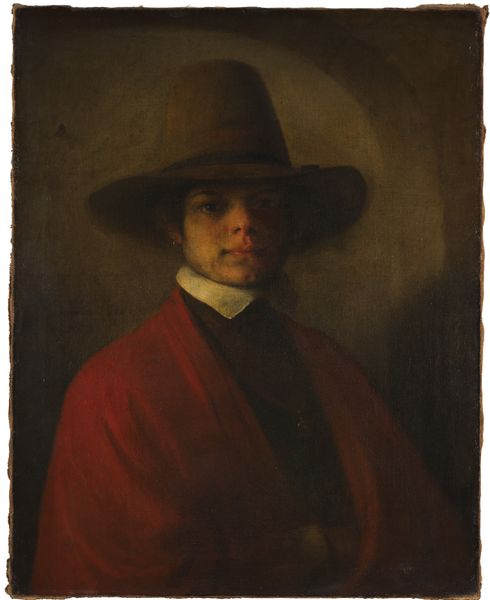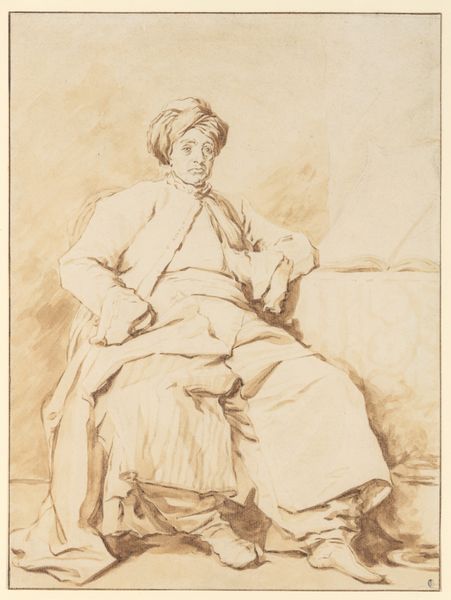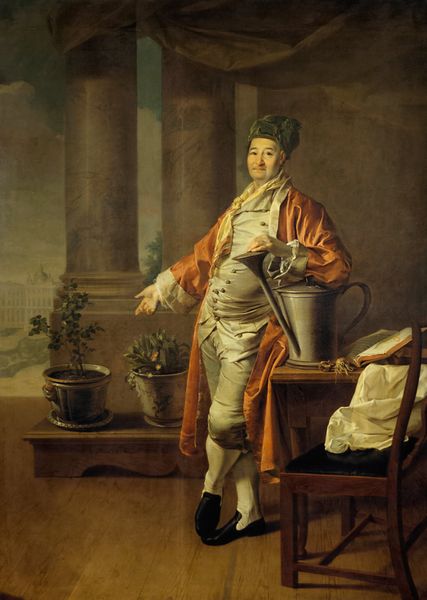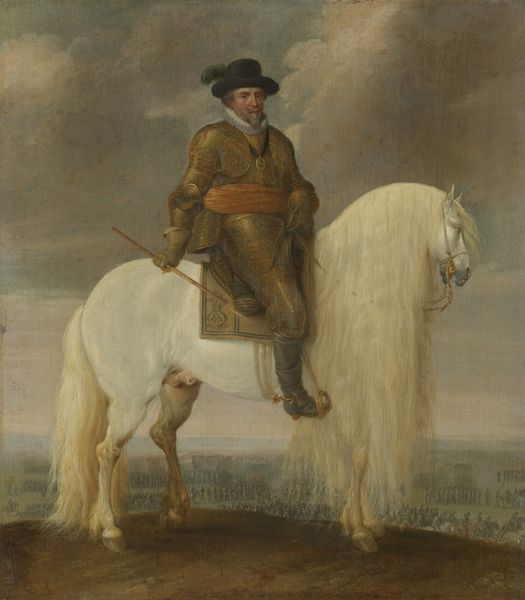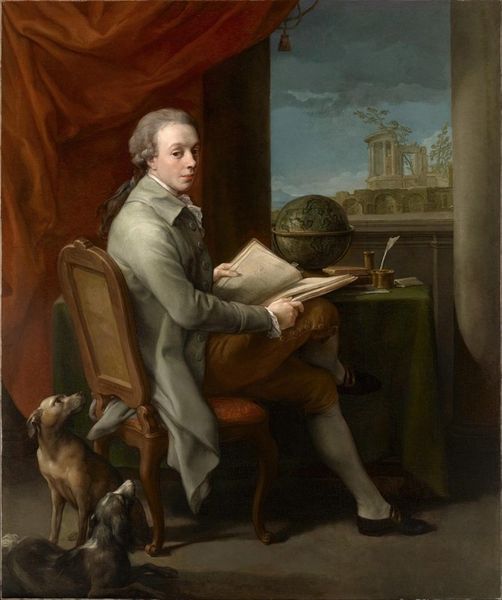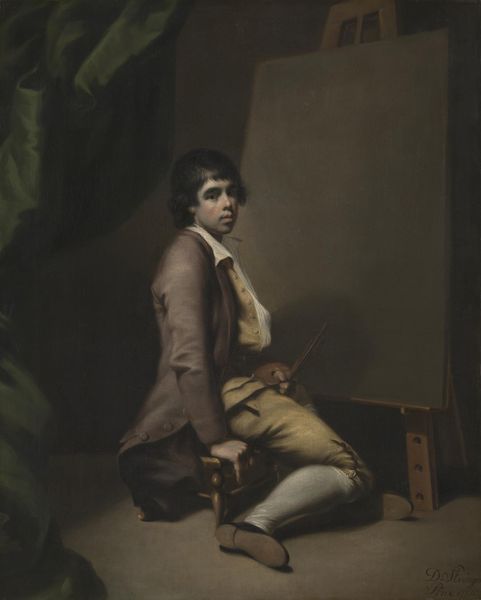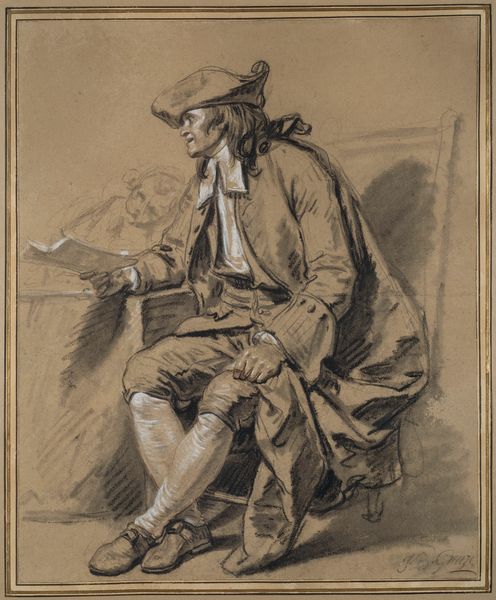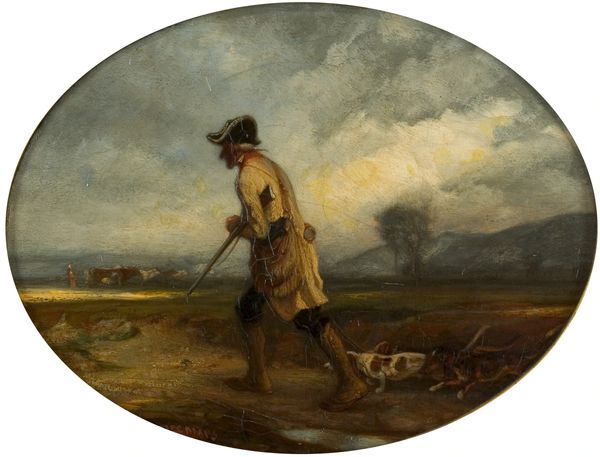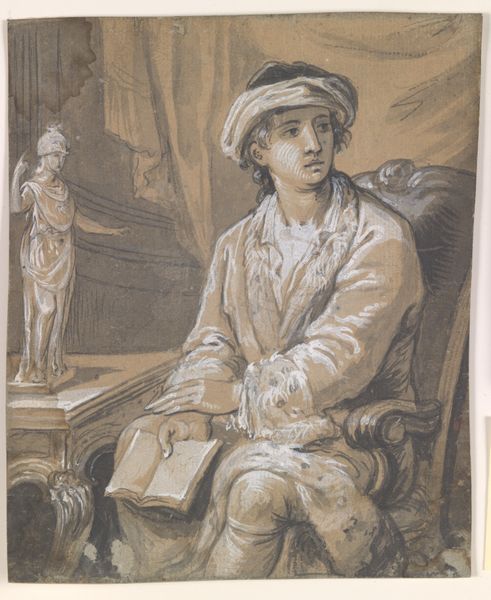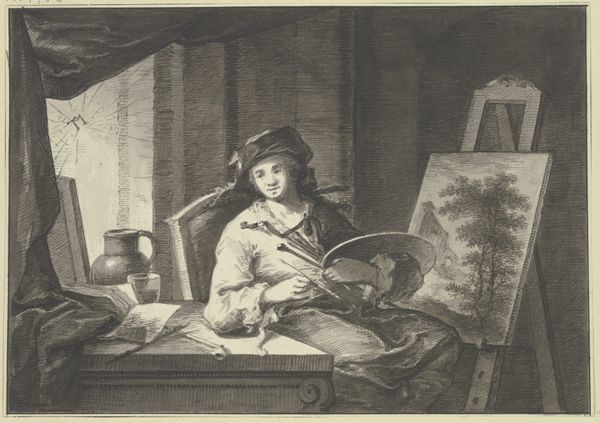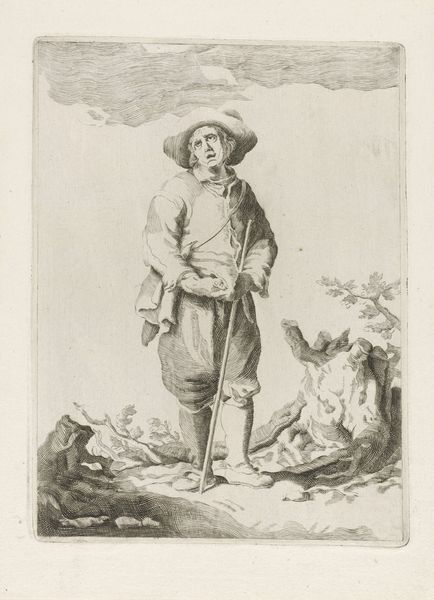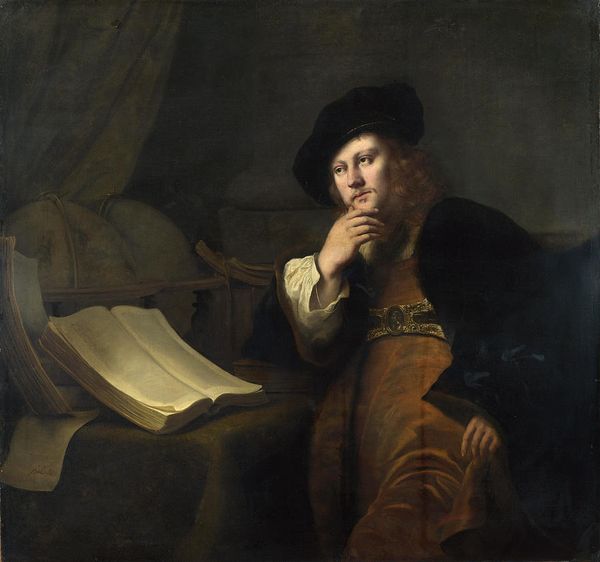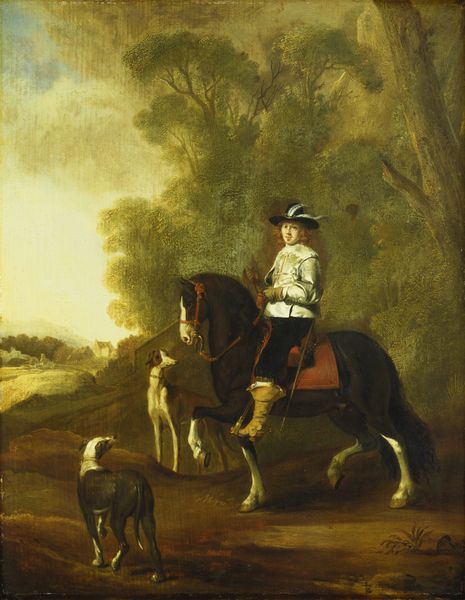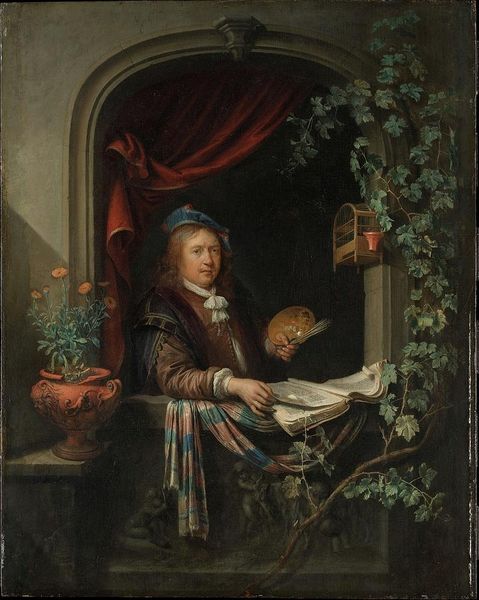
painting, oil-paint
#
portrait
#
neoclacissism
#
painting
#
oil-paint
#
landscape
#
classicism
Dimensions: 166 x 210.3 cm
Copyright: Public Domain
Curator: Looking at Tischbein's "Goethe in the Roman Campagna," painted in 1787, I'm immediately struck by the way Goethe is draped. He's reclining amidst these Roman ruins, but almost looks like a modern-day Caesar, playing at being a scholar amongst the fragments of a glorious past. Editor: What grabs me right away is the materiality of his cloak and that almost cartoonishly wide hat. The contrast between the coarse weave of the fabric and the smooth rendering of his face speaks volumes. Curator: Indeed, the painting perfectly encapsulates the spirit of Neoclassicism. There is that embrace of the aesthetic and philosophical ideals of ancient Greece and Rome, evident not only in the setting but in Goethe’s pose. I almost feel as though I am standing shoulder to shoulder with Goethe! His choice of clothing seems more theatrical. Editor: The actual production process of the piece would have been significant too. Oil paint allows for such layered rendering and the manipulation of texture. Thinking about the pigment, the grounds, the very act of creating such an illusion with these material elements is key. Curator: Absolutely. And that illusion carries a lot of weight. It’s not merely a depiction; it is an invitation to muse upon the echoes of history and also contemplate the intellectual ambitions of the artist Goethe himself. The Campagna symbolizes intellectual freedom and artistic aspiration. Goethe journeyed there to free himself from creative constraints, if you will, reinventing himself away from social boundaries. Editor: That reinvention is also expressed through fashion and material culture, isn’t it? Tischbein isn't only painting a great thinker—he's selling an idea. I wonder who paid for his clothing... Who sourced the pigments... Who commissioned the portrait in the first place, for what purpose. Curator: I completely agree, and that’s part of what makes the work so compelling. It invites multiple layers of interpretation and that makes art a unique experience that stays with you long after you walk away. Editor: Exactly! There is also a conversation about legacy going on in terms of art, production, materials, intellectual life, self expression...it’s there in every stroke and shade.
Comments
stadelmuseum over 1 year ago
⋮
No other portrait has shaped our image of Goethe as much as this one: the painter Tischbein depicts the “great Goethe” as a man in between epochs, in between antiquity and his own time. Goethe set off for Italy in September 1786, incognito, for he was already a famous author. In Rome, he stayed with his painter friend Tischbein, with whom he also made an excursion to the tombs of antiquity in the Campagna, the backdrop of which the artist uses for staging the famous poet. Only on closer inspection does the depiction’s still unexplained oddity become apparent: it looks as if Goethe had two left feet.
Join the conversation
Join millions of artists and users on Artera today and experience the ultimate creative platform.
